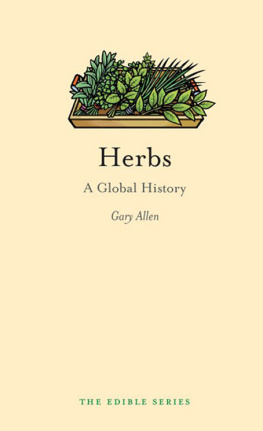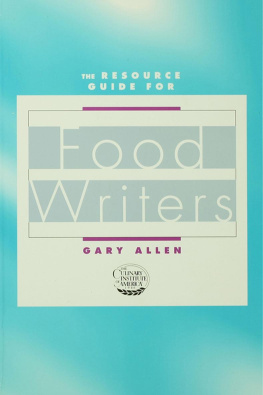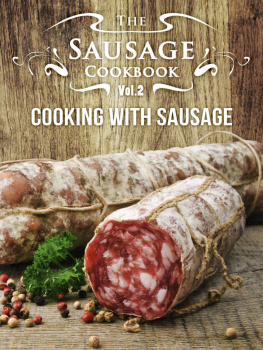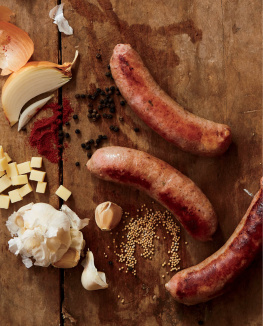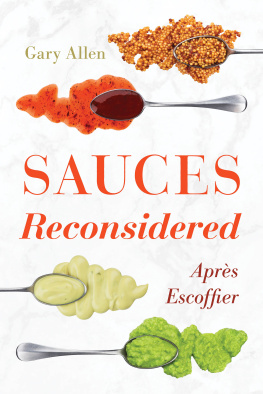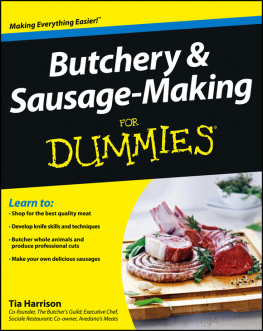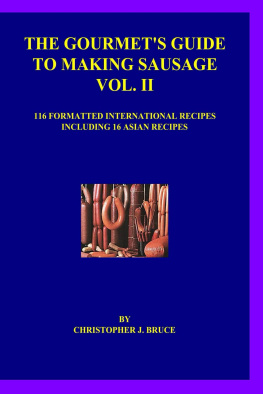SAUSAGE

Edible
Series Editor: Andrew F. Smith
EDIBLE is a revolutionary series of books dedicated to food and drink that explores the rich history of cuisine. Each book reveals the global history and culture of one type of food or beverage.
Already published
Apple Erika Janik Barbecue Jonathan Deutsch and Megan
J. Elias Beef Lorna Piatti-Farnell Beer Gavin D. Smith
Brandy Becky Sue Epstein Bread William Rubel
Cake Nicola Humble Caviar Nichola Fletcher
Champagne Becky Sue Epstein Cheese Andrew Dalby
Chocolate Sarah Moss and Alexander Badenoch
Cocktails Joseph M. Carlin Curry Colleen Taylor Sen
Dates Nawal Nasrallah Doughnut Heather Hunwick
Dumplings Barbara Gallani Eggs Diane Toops
Figs David C. Sutton Game Paula Young Lee
Gin Lesley Jacobs Solmonson Hamburger Andrew F. Smith
Herbs Gary Allen Hot Dog Bruce Kraig Ice Cream Laura B.
Weiss Lamb Brian Yarvin Lemon Toby Sonneman
Lobster Elisabeth Townsend Milk Hannah Velten
Mushroom Cynthia D. Bertelsen Nuts Ken Albala
Offal Nina Edwards Olive Fabrizia Lanza Oranges Clarissa
Hyman Pancake Ken Albala Pie Janet Clarkson
Pineapple Kaori O Connor Pizza Carol Helstosky
Pork Katharine M. Rogers Potato Andrew F. Smith
Pudding Jeri Quinzio Rice Renee Marton Rum Richard Foss
Salmon Nicolaas Mink Sandwich Bee Wilson Sauces Maryann
Tebben Sausage Gary Allen Soup Janet Clarkson
Spices Fred Czarra Sugar Andrew F. Smith Tea Helen Saberi
Tequila Ian Williams Truffle Zachary Nowak Vodka Patricia
Herlihy Water Ian Miller Whiskey Kevin R. Kosar
Wine Marc Millon
Sausage
A Global History
Gary Allen
REAKTION BOOKS
This little book is dedicated to my late mother, Arline Billie Allen (and to her mother, whom I never met, since she died five years before I was born). Together, they instilled in me a taste for their League of Nations approach to cooking and eating, and a lifelong curiosity about so-called foreign foods.
Published by Reaktion Books Ltd
33 Great Sutton Street
London EC1V 0DX, UK
www.reaktionbooks.co.uk
First published 2015
Copyright Gary Allen 2015
All rights reserved
No part of this publication may be reproduced, stored in a retrieval system, or transmitted, in any form or by any means, electronic, mechanical, photocopying, recording or otherwise, without the prior permission of the publishers
Page references in the Photo Acknowledgements and
Index match the printed edition of this book.
Printed and bound in China
A catalogue record for this book is available from the British Library
eISBN: 9781780235554
Contents

Introduction

Four decades ago, before there were any books available on sausage for the home cook, I became interested in sausage-making. Having discovered that there was little written on the subject, I began researching the topic myself, converting commercial-scale recipes to manageable size, and participating in every part of the process, from slaughter (yes, even cleaning out pig intestines for casings which, as you can imagine, was not one of the more pleasant parts of the research) to finished dishes. That was before I was a writer, and no book ever came out of it. Since that earlier start, many sausage cookbooks have been published, so this book takes a different approach: historical and comparative. It attempts to help us understand a little about where our sausages come from, and how they got to be the way they are today. While I was undertaking my early research, every dinner guest at my home was subjected to one sausage dish or another. In the course of writing this book, the process has been repeated, perhaps as dinner guests might have been too polite to say ad nauseam. It is probably impolitic to refer to those long-suffering diners as guinea pigs, but I am nonetheless grateful for their sacrifice.
Sausages have long been part of our gastronomic lives, probably for as long as humans have used fire and salt to prepare food. They have been invented, independently, in many places. Specific sausages have also been introduced to other cultures, gradually evolving in the presence of different conditions, cultures and ingredients.

Grilled sausages.
What makes a sausage a sausage? What doesnt? These are fundamental questions, and the answers are, at once, as simple and as varied and complex as anything in the gamut of world foods. It is the opposite of the famous remark, often misattributed to Otto von Bismarck, that the making of laws is like the making of sausages the less you know about the process, the more you respect the result.
This book celebrates sausages in all their spicy, salty, smoky and juicy glory. While it may not earn respect for these once-humble foods, it may elicit greater appreciation for their vast savouriness and variability, and reveal the way they (and we) have spread around the globe.
1
What is Sausage, and Where Did it Originate?

When our early ancestors began to coordinate their hunting activities, giving them access to large animals at least ones that were not already dead when they found them they had to deal with a number of new technical problems. First was the size of the prey. The need to cut the fallen beasts into more convenient parcels led to the creation of better cutting tools, and bone, horn, stone and even fire-hardened wood provided the raw materials for a host of cutting and scraping implements. Second came spoilage: meat is one of the most perishable of foods, and early humans learned that smoking and drying could extend the period of time in which meat remained edible and safe. Our oldest written records show that we have long known that salt improves the quality and longevity of preserved meats. Surviving Sumerian clay tablets from Mesopotamia (1600 BC) are filled with references to salted meats. The third problem was packaging and the avoidance of waste. Hunting large animals involved considerable effort, and so it was critical that none of the animals flesh or organs be wasted. Somewhere in our ancient past, a hunter realized that the intestines, stomachs and skins of animals could be fashioned into convenient parcels for all the scraps of meat and organs that might otherwise be wasted.
While the facts of the creation of the first sausage are lost in ancient times, we do know that it occurred at least 3,000 years ago. We know from murals that the ancient Egyptians made a kind of sausage from the blood of sacrificial cattle, but two of the earliest written accounts of sausages appeared in Homers


